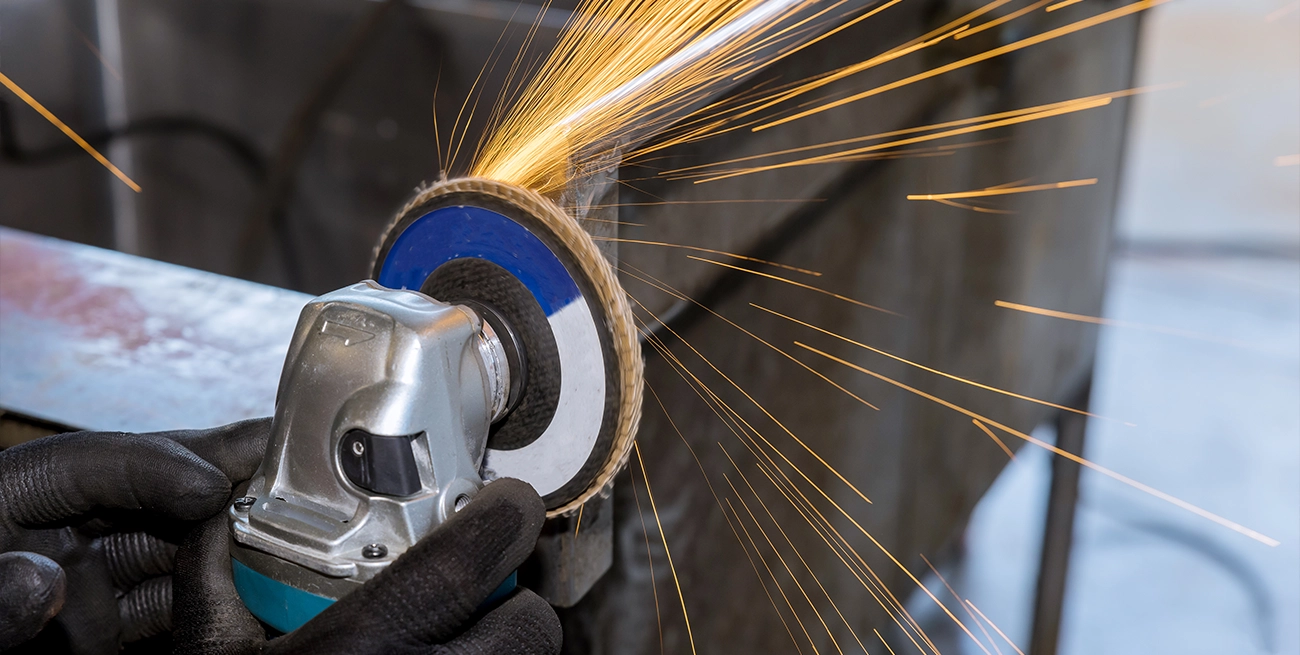Understanding Abrasive Grades and Their Industrial Applications

Abrasives are everywhere in industrial work. From smoothing metal edges to preparing surfaces for coatings, they are essential for countless tasks. But what makes one abrasive better for a job than another? The answer often lies in its grade, material, and intended use. Let's break it all down.
What Are Abrasive Grades?
Abrasive grades indicate the coarseness or fineness of the abrasive material. This grading plays a key role in how much material the abrasive removes and the finish it leaves behind. Grades range from coarse to ultra-fine, often labeled by numbers or grit sizes:
- Coarse Grades (40-60 grit): Remove material quickly and are ideal for heavy-duty tasks like grinding or stripping paint.
- Medium Grades (80-120 grit): Balance material removal with surface finishing, making them versatile for general-purpose use.
- Fine Grades (150-220 grit): Refine surfaces and prepare them for finishing processes such as painting or sealing.
- Extra-Fine Grades (240 and above): Deliver polished, smooth finishes, often used for precision work or on delicate materials.
Types of Abrasive Materials
The material of the abrasive influences its performance and the types of surfaces it can handle. Understanding these materials helps in selecting the right tool for the job.
1. Aluminum Oxide
A durable, versatile choice commonly found in grinding wheels and sandpaper. It works well on metals, wood, and some plastics. This material is self-sharpening, meaning it breaks down in a way that reveals new cutting edges.
Common Applications:
- Polishing automotive parts
- Deburring metal edges
- Refinishing hardwood floors
2. Silicon Carbide
This abrasive is sharper and harder than aluminum oxide but less durable. Its sharpness makes it ideal for working on brittle materials like glass or ceramics.
Common Applications:
- Grinding stone or concrete
- Cutting tile or glass
- Smoothing non-ferrous metals like aluminum
3. Garnet
Garnet abrasives are softer and less aggressive, making them a good fit for fine finishing tasks. They are often used in woodworking due to their gentle sanding action.
Common Applications:
- Hand sanding wood
- Creating smooth finishes on soft metals
- Surface preparation for staining or painting
4. Diamond
The hardest natural material, diamond abrasives are unmatched in cutting ability. They’re often used in specialized tools for heavy-duty or precision work.
Common Applications:
- Cutting and grinding stone
- Shaping hard ceramics
- Polishing optics or lenses
How Abrasive Grades Affect Performance
The grade of an abrasive affects three major factors:
1. Speed of Material Removal
Coarse abrasives remove material quickly but can leave deep scratches or uneven finishes. They’re ideal for removing welds or cutting through thick layers of rust.
2. Surface Finish
Finer grades produce smoother finishes but work more slowly. They’re suited for preparing surfaces that require a polished or refined look.
3. Heat Generation
Higher-grit abrasives often generate less heat, reducing the risk of damaging heat-sensitive materials like certain plastics or thin metals.
Choosing the Right Abrasive for Your Application
Metalwork
For heavy-duty grinding, start with a coarse abrasive like a 40-grit aluminum oxide disc. For polishing, move to finer grades, or even diamond abrasives for stainless steel or titanium.
Woodworking
Garnet abrasives excel at sanding wood due to their softer touch. Start with medium grades (80-120 grit) for shaping, and move to finer grades (150-220 grit) for finishing.
Automotive
Bodywork often demands a mix of abrasive grades. Use coarse abrasives to strip old paint and finer grades for smoothing and prepping surfaces for a new coat.
Construction
Silicon carbide abrasives are excellent for grinding concrete and stone. For precision tile cutting, diamond abrasives are the go-to.
Tips for Using Abrasives Efficiently
- Use the Right Tool: Match the abrasive to the power tool. A mismatched pairing can reduce efficiency or even damage the tool.
- Start Coarse, Finish Fine: Begin with a coarse grade to remove material quickly, then progress to finer grades for a smoother finish.
- Replace Worn Abrasives: A dull abrasive works inefficiently and may damage the surface.
- Adjust Pressure and Speed: Let the abrasive do the work. Excessive pressure can wear it out faster and create uneven results.
Specialty Abrasive Applications
Abrasive Blasting
Sandblasting and bead blasting use abrasive materials propelled at high speeds to clean surfaces or create specific textures. Media like glass beads or walnut shells are used for less aggressive cleaning.
Waterjet Cutting
Abrasive waterjets mix water with fine particles, often garnet, to cut through materials like steel or granite with extreme precision.
Microfinishing
For ultra-precise polishing, abrasives with micron-level particles are used in industries like aerospace or medical device manufacturing.
Myths About Abrasive Grades
Myth 1: Coarser Abrasives Are Always Better for Speed
While coarse grades remove material quickly, they can clog or wear out faster on softer surfaces, making finer grades more efficient in some cases.
Myth 2: Any Abrasive Works on Any Material
Using the wrong abrasive can ruin your project. For instance, aluminum oxide is too aggressive for delicate glass, and garnet is ineffective on hardened steel.
Myth 3: Abrasives Are All the Same
Cheap abrasives may save money upfront but wear out faster or produce inconsistent results. Investing in quality ensures better performance and longevity.
Make Abrasives Work for You
Choosing the right abrasive is more than just picking a grit size or material—it’s about matching the tool to the task. By understanding grades and applications, you can achieve better results while working more efficiently. So whether you’re prepping a metal panel or smoothing a wooden surface, make sure your abrasives are up to the challenge.


